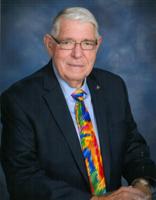When researchers began calculating the fiscal, economic and social effect of immigration on Indiana, they made extra efforts to avoid viewing the results through a political lens.
The report steers away from rhetoric, aiming instead at the “data-driven, logical rationale,” said Michael Hicks, its co-author.
Hicks serves as director of Ball State University’s Center for Business and Economic Research. He’s a “fiscal conservative” economist and retired U.S. Army reserve infantryman who served in combat and peacekeeping missions. Hicks’ family has been in the United States since 1638. And, Hicks understands legitimate immigration issues need resolved in the governmental process.
That said, the bottom-line conclusions by Hicks and Ball State colleague Emily Wornell is that immigration has proved to be a positive for Indiana, especially in rural counties that otherwise have seen population and economic declines. Twenty-five percent of Indiana’s population growth between 2000 and 2015 came from immigration, making the state one of several “new immigrant destinations.”
The vast majority have legal status. “Indiana doesn’t have very many illegal immigrants,” Hicks said. “It’s just not that large a number.” The immigrants who’ve become Hoosiers tend to be entrepreneurial, support the public service system by paying income, payroll, sales and property taxes. Their presence in the workforce has no long-term negative effect on wages, Hicks added, and the newcomers have higher levels of education.
Their analysis shows immigration has been “a net benefit to the state and should be welcomed in every county and municipality,” Hicks said by phone Thursday.
The region of Indiana with the largest growth in foreign-born population is also the most affluent. The Indianapolis rim counties region — which includes Carmel, Noblesville, Fishers and Zionsville — attracted a 599-percent increase in immigrant population from 1990 to 2016. Ten of the state’s 12 regions in the study experienced immigrant population jumps of 121 percent or more in that same period. Eight exceeded 220 percent.
By far, the region with the smallest growth of foreign-born residents in the past quarter-century surrounds Terre Haute. Five of the six counties making up Region 7 in the study also have some of the highest unemployment rates in the state, according to Indiana Workforce Development numbers from April.
From 1990 to 2016, the U.S.-born population in the region of Clay, Parke, Putnam, Sullivan, Vermillion and Vigo counties grew by 11,946 to a total of 221,269 — a jump of 5.7 percent.
Meanwhile, the region’s foreign-born population rose from 2,980 to 4,835 — or 62.9 percent. Eighteen percent of immigrants living in this area hold college degrees, and 10 percent have graduate degrees — levels two times higher than the native population. More than half came here from Asia, with Latin America and Europe as the next two largest continents represented, according to American Community Survey data.
Terre Haute and its neighboring communities can draw immigrants through being home to four college campuses, as well as a significant health care system and advanced manufacturing companies. A strong quality of life also can keep those already here, and their children.
“There’s a good opportunity to do some work around retention,” said Wornell, a research assistant professor with BSU’s Indiana Communities Institute.
Growing a local and regional economy is an uphill battle if the population isn’t growing, Hicks emphasized. Also, the declining population in rural counties has forced consolidations and school closings around Indiana. Immigrants are adding productivity to cities, towns and rural areas around the state, and fill up classrooms, the Ball State researchers found.
There’s a positive cultural impact to a town, too, with both longtime Hoosiers and newcomers experiencing each other’s heritages. Hicks cited a popular festival in Muncie organized by its Indian community. “It’s a modern version of the Oktoberfest you have in Terre Haute,” he said, “and is worthy of thinking about.”
Communities aiming for more prosperity and a good standard of living in the future should prepare for and embrace such new residents, Hicks said. Those places should ask themselves, “What can we do to make this good for our community?” he said. “Because immigration is going to happen.”
Mark Bennett can be reached at 812-231-4377 or mark.bennett@tribstar.com.

































Commented
Sorry, there are no recent results for popular commented articles.